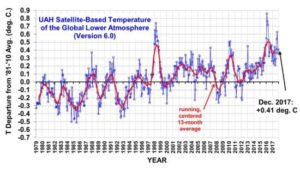by Haaretz and Reuters, January 29, 2018
Surging shale production is poised to continue pushing U.S. oil output to more than 10 million barrels per day – toppling a record set in 1970 and crossing a threshold few could have imagined even a decade ago. The U.S. government forecasts that the nation’s production will climb to 11 million barrels a day by late 2019, a level that would rival Russia, the world’s top producer.
(…)
New technology, new fields
The next phase of shale output growth depends on techniques to squeeze more oil from each well. Companies are now putting sensors on drill bits to more precisely access oil deposits, using artificial intelligence and remote operators to get the most out of equipment and trained engineers.

